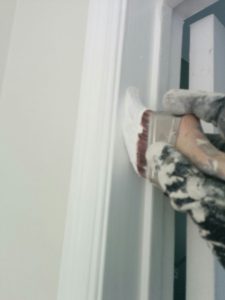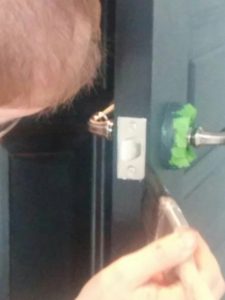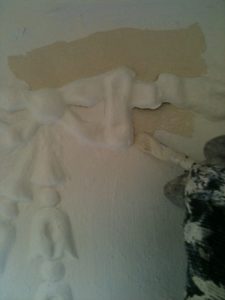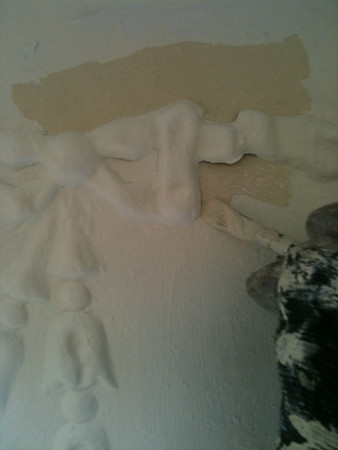I often get asked by people who enjoy DIY projects, “what kind of brushes and rollers do you use?”
In this post, I’d like to talk about brush selection, and in a subsequent post I’ll talk about roller selection.
Quality is key.
A low quality brush will only give you frustration and slow the painting process down. How do we select a quality brush? Take the brush out of the package and place it against a wall with a little bit of pressure, as if you’re applying paint. If the bristles come to a nice point, that’s the sign of a good quality brush, you’ll be able to apply the paint in a nice clean cut line. If when you place the brush against a wall and the bristles are going many different directions – select another brush, or use it as a dust brush!
The type of brush is dictated by the task you are doing.
There are two main types of brushes; angle sash and straight sash.
Angle sash brushes are cut at an angle, so that the bristles come to a point. These brushes are good for all tasks, especially when cutting straight lines, for example, brushing the top edge of a wall, or painting a window.
Straight sash brushes are squared off at the bottom. These brushes are not as good at cutting a straight line as an angle sash. They are good, however, for painting clapboard siding and decks.
The size of the brush should be determined by the task that you are doing.
If you are painting walls, I’d recommend a 2.5″ or 3″ brush. These brushes will hold more paint so you will not have to be dipping your brush in the paint as often. This allows you to do longer, more even strokes, which will result in a better, smoother, finish.
 Most trim I use a 2″ to 2.5″ brush. This would include baseboards that are over 3″ (which most are these days), window and door casements, doors, etc.
Most trim I use a 2″ to 2.5″ brush. This would include baseboards that are over 3″ (which most are these days), window and door casements, doors, etc.
If you are painting fine trim, such as a french door, you could opt for a smaller 1.5″ brush. This will ensure that you don’t get too much paint on the smaller surface. Too much paint on the surface and you will get drips and sags.
Sometimes there are times when an artist brush comes in handy. These are great for detail work! Here’s a tip to keep the brush steady while doing fine detail work; touch the surface with your pinky and ring finger while you hold the brush with your thumb, index and middle finger. The pinky and ring finger anchor your hand and minimize any hand shakiness.
What brands of brushes are good?
This is all a matter of personal preference, of course, but I’ll give a few suggestions to start you off. You can look for Purdy brushes, Wooster brushes, these are pricy brushes, but you get what you pay for, if you take care of them, they’ll last for a while. Other good brush brands are Piccaso (which can be found at some Benjamin Moore stores). If you’re looking for a more economical brush, Sherwin Williams has a contractor grade brush that has a lot of bang for the buck.
If you’re project is bigger, or more involved than you’d like to take on, please book a quote! We’d be happy to come over and give you a quote and help you Transform your home with lasting beauty!

